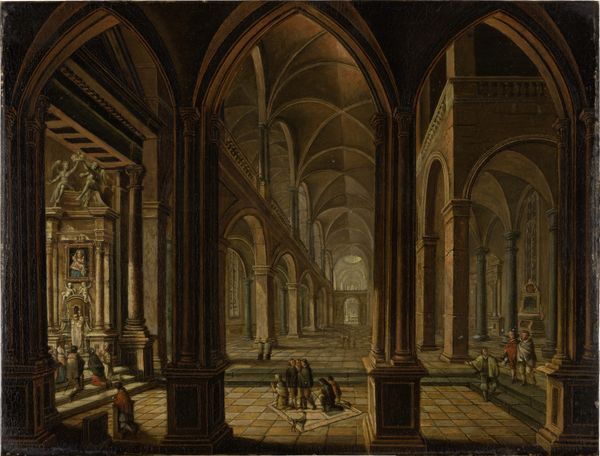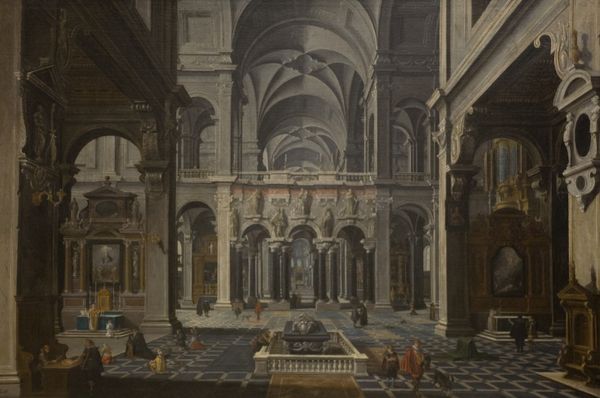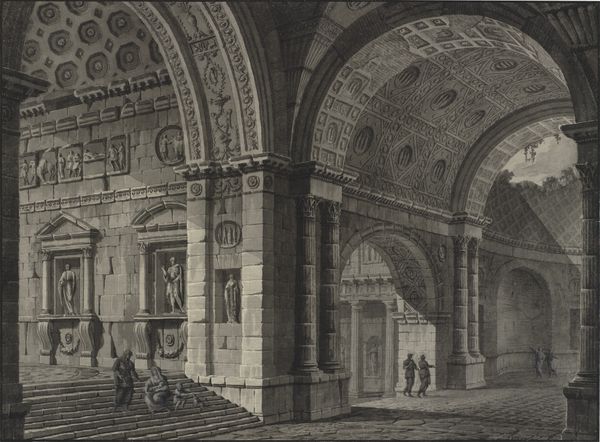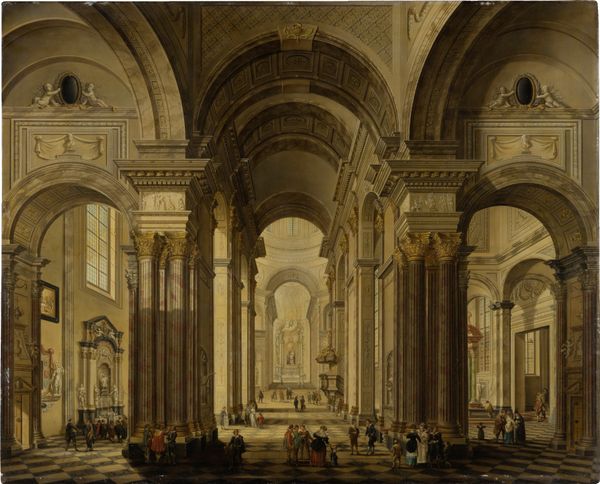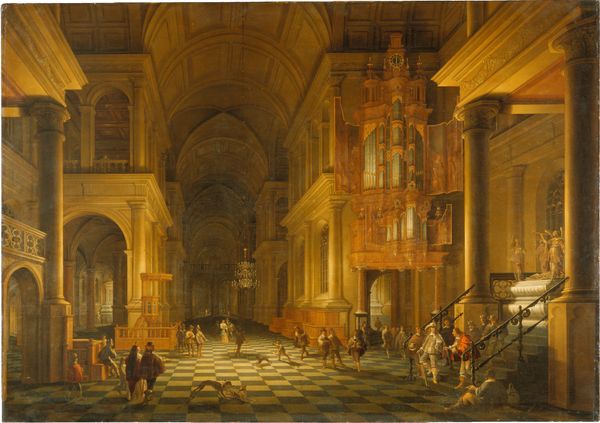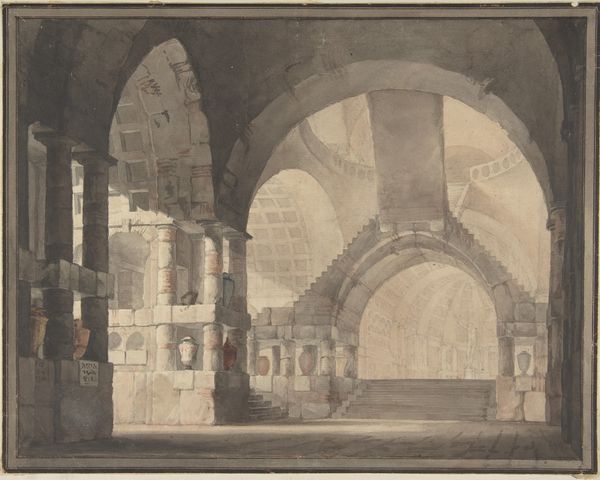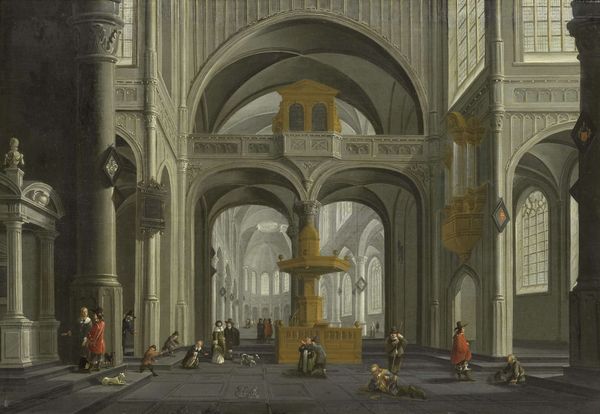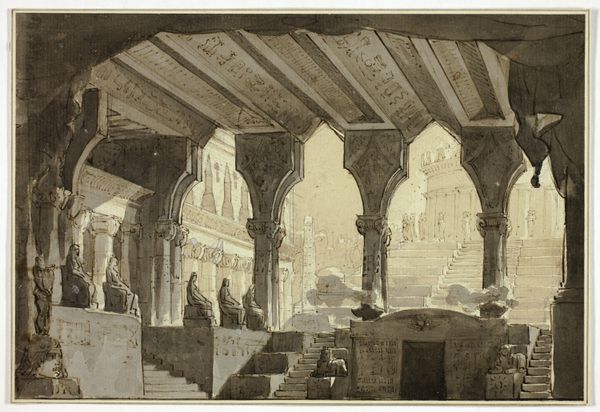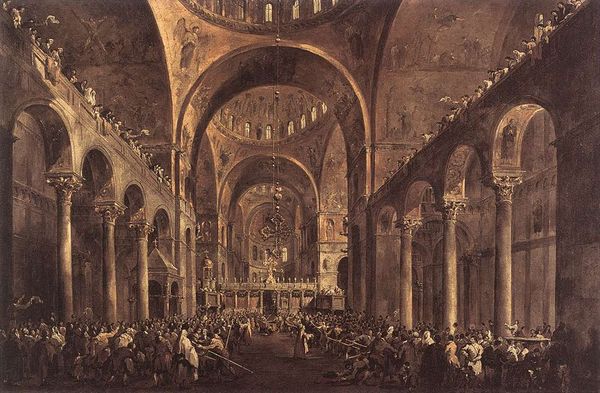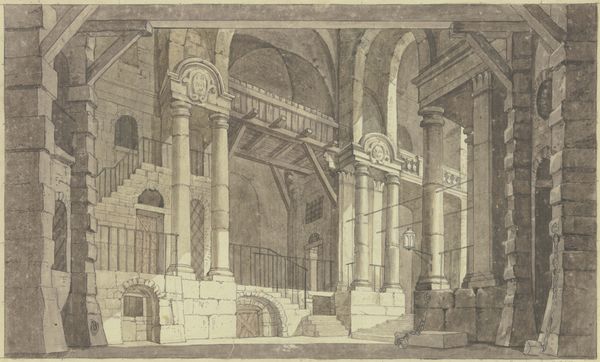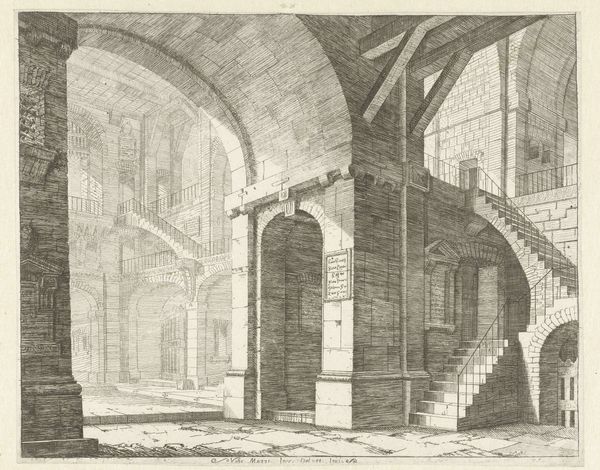
tempera, painting, oil-paint
#
narrative-art
#
baroque
#
tempera
#
painting
#
oil-paint
#
sculpture
#
figuration
#
genre-painting
#
history-painting
Dimensions: 46.5 cm (height) x 68.5 cm (width) (Brutto), 35 cm (height) x 57 cm (width) (Netto)
Curator: What an interesting atmosphere! Before us is "Fængselsdekoration med fanger og fangevogtere," which translates to "Prison Decoration with Prisoners and Jailers," attributed to Jacob Fabris and believed to have been created sometime between 1720 and 1761. Editor: It’s so oppressive. The artist's use of brown tempera and oil paint creates a feeling of gloom, a somber world. It also calls to mind Piranesi's architectural fantasies but more controlled. All of the barred windows and dangling hooks overhead amplify the psychological tension and feeling of confinement. Curator: Yes, it presents a unique visual narrative that blends architectural study with social commentary. What I find fascinating is how it presents a somewhat detached view of incarceration, devoid of explicit suffering, suggesting the institutional aspect of the jail, how they wanted to showcase it to the public, and its existence within society. Editor: True, yet it also echoes traditional imagery related to damnation or purgatory. Those arches and columns bear more than a passing resemblance to visual representations of infernal realms, don't you think? And note how even the jailers are partially obscured, adding a layer of moral ambiguity and implying complicity. They could symbolize some gatekeepers of a lower circle in Dante’s inferno. Curator: That's insightful! It moves past a straightforward illustration of daily life in a prison to a powerful statement about power, punishment, and societal control. Considering the Baroque artistic elements on display, it fits into a long history of how architectural spaces are conceived. There's something chilling about this artistic rendering of such themes in that time period. Editor: Definitely. The symbolism here lingers and is truly multi-layered, connecting this single scene with broader understandings about guilt, punishment, and even spiritual torment through recurring tropes. It definitely goes beyond the visual impression of just an interior with jailers and prisoners! Curator: Yes, precisely. Fabris gave us, from a distance, a stark reminder of what justice means to one another and the individual experience versus its implications on the greater system. Editor: I'll certainly not look at keys the same way again. Thanks to that stark atmosphere, these recurring representations are a sober memento!
Comments
No comments
Be the first to comment and join the conversation on the ultimate creative platform.
